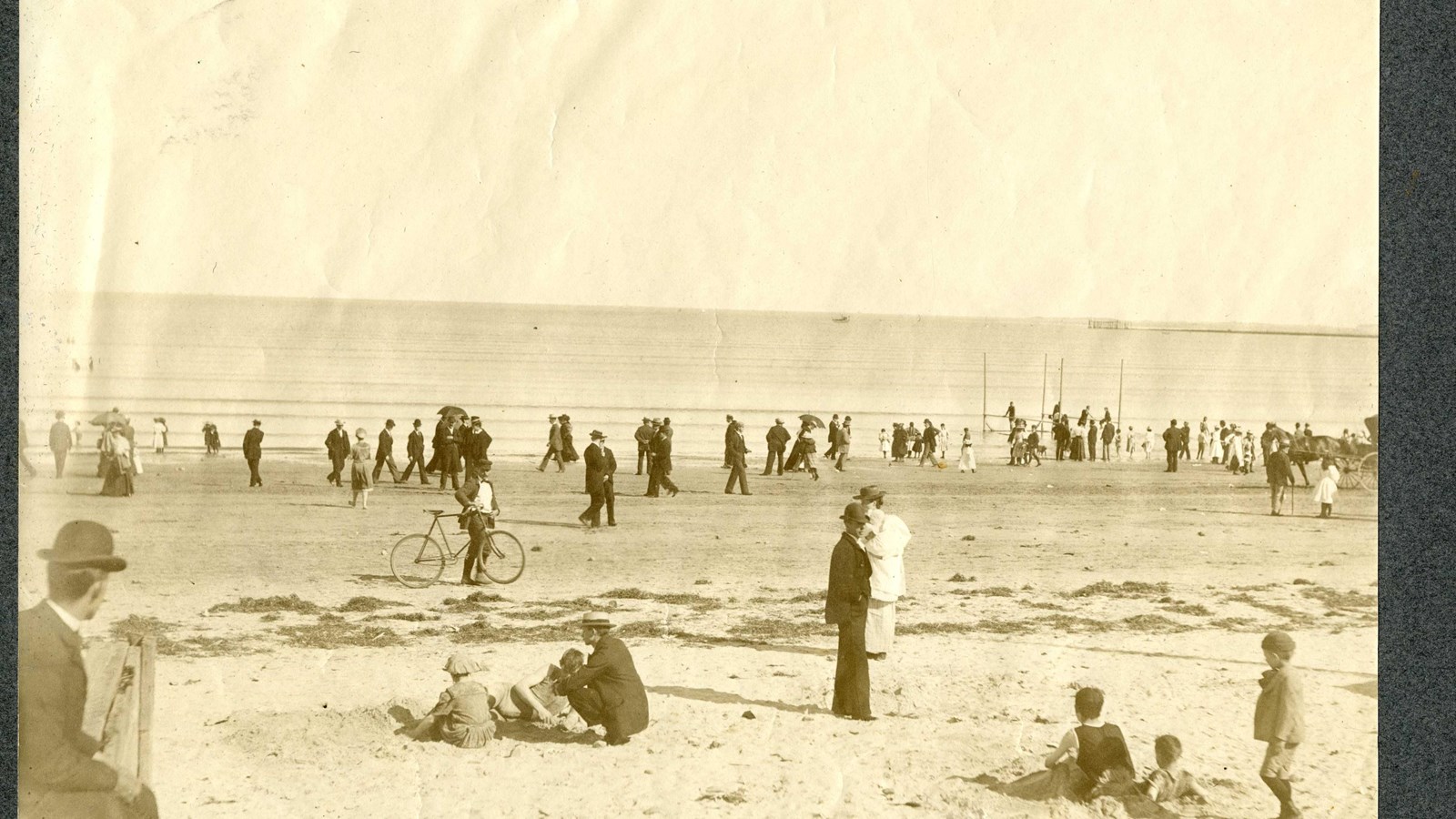Last updated: June 11, 2024
Place
Revere Beach

Olmsted Archives
Quick Facts
By 1893, Charles Eliot had been trained by Frederick Law Olmsted, left the firm that trained him, and had returned. It was two years later that Eliot was commissioned, as a member of the Olmsted firm, to create a formal design for a new beach in Revere, MA.
Just five miles north of Boston, Eliot would state that at Revere, “we must not conceal from visitors the long sweep of the open beach which is the finest thing about the reservation". Olmsted taught all who entered his office to preserve and enhance the existing natural features of the site they’re working at, and at Revere, Eliot’s design called for restoration of the natural contours of the beach.
Rail accesses introduced in 1875 allowed for easy access to an already popular coastline, though Eliot removed all railroads and buildings that impeded the view of the sea. To remedy the removal, Eliot’s design included a boulevard along the length of the shore for several new structures.
An already popular coastline began developing as quickly as Eliot could design, with new dance and music halls, hotels, cinemas, and amusement parks popping up. America’s oldest beach, and the first in the United States acquired for the purposes of public recreation officially opened its 4.5-mile crescent-shaped stretch in 1896, with 45,000 people gathering to celebrate.
Source: "Revere Beach Reservation," The Cultural Landscape Foundation
For more information and primary resources, please visit:
Olmsted Research Guide Online
Olmsted Archives on Flickr
Just five miles north of Boston, Eliot would state that at Revere, “we must not conceal from visitors the long sweep of the open beach which is the finest thing about the reservation". Olmsted taught all who entered his office to preserve and enhance the existing natural features of the site they’re working at, and at Revere, Eliot’s design called for restoration of the natural contours of the beach.
Rail accesses introduced in 1875 allowed for easy access to an already popular coastline, though Eliot removed all railroads and buildings that impeded the view of the sea. To remedy the removal, Eliot’s design included a boulevard along the length of the shore for several new structures.
An already popular coastline began developing as quickly as Eliot could design, with new dance and music halls, hotels, cinemas, and amusement parks popping up. America’s oldest beach, and the first in the United States acquired for the purposes of public recreation officially opened its 4.5-mile crescent-shaped stretch in 1896, with 45,000 people gathering to celebrate.
Source: "Revere Beach Reservation," The Cultural Landscape Foundation
For more information and primary resources, please visit:
Olmsted Research Guide Online
Olmsted Archives on Flickr
